The fascinating history of the catwalk show
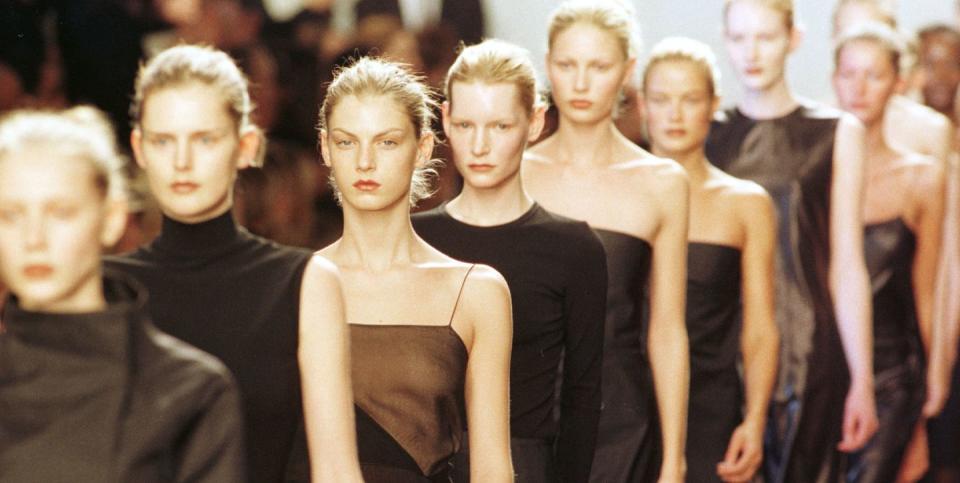
For several decades, the circus of fashion week has been an international event, a pop-culture phenomenon which captures the interest of millions as designers present their latest collections, models strut their stuff on the catwalk, celebrities perch immaculately on the front row and editors dart from one city to another, several times a year. More recently though, the role of the runway show has come into question following the explosion of social media, a reckoning regarding sustainability and, more recently, a global pandemic which halted travel and gatherings of people, all of which has led to a more digital-focused fashion week. So, while the industry resets and has an opportunity to look inwards regarding the future of the fashion show, it is interesting to consider how we got to today’s typical catwalk extravaganza, and what we can learn from its history about where we might head next.
“Most fashion historians consider English designer Charles Frederick Worth as the originator of using models,” Maria Costantino, a lecturer in cultural and historical studies at the London College of Fashion, tells me. “From the mid 1860s, the house was hiring young women as what were then called ‘demoiselles de magasins’.”
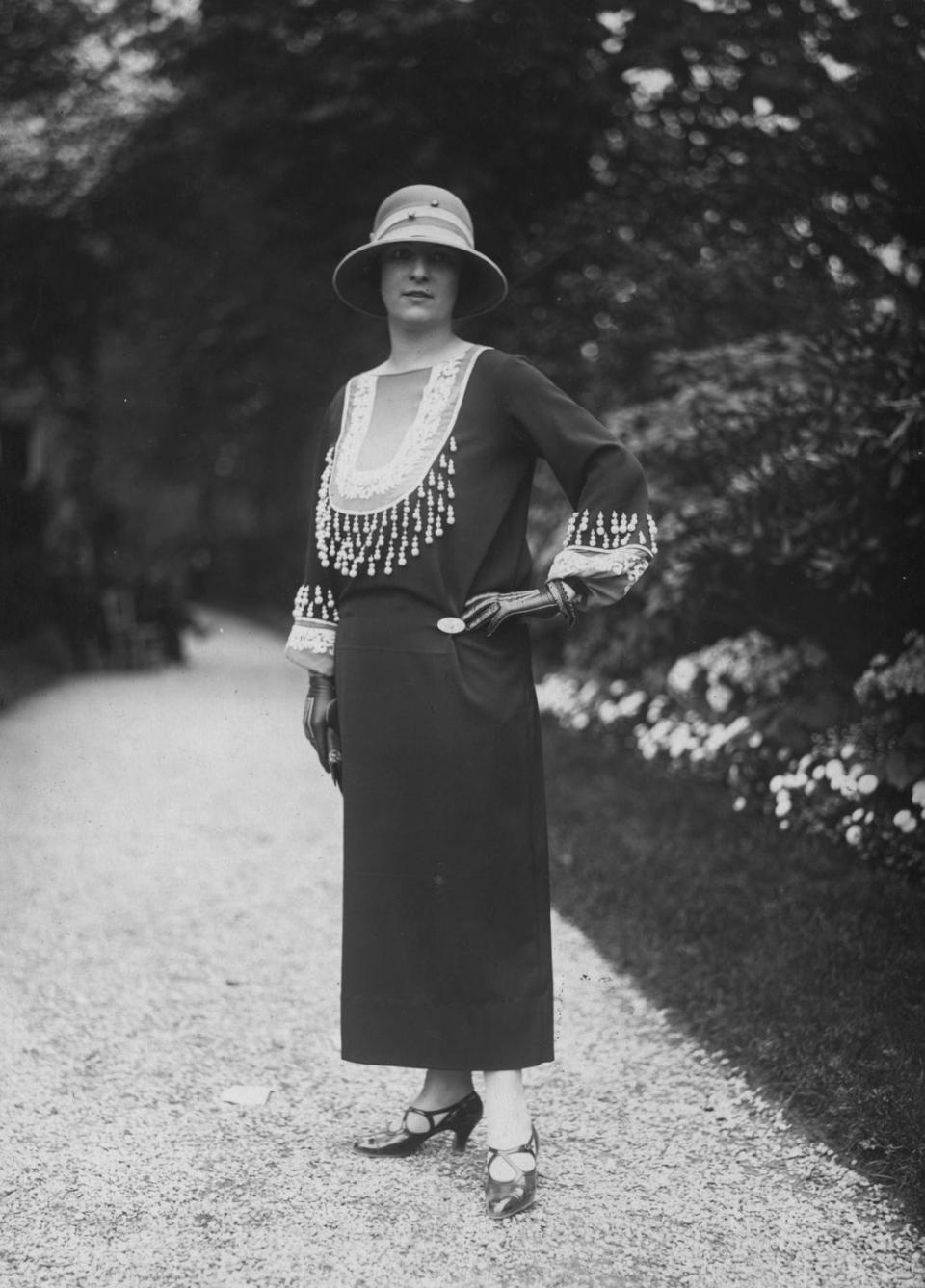
This development changed the relationship between the dressmaker and the client. Rather than the designer coming directly to the customer, the designs were presented to clients through a ‘defile’, which was a simple presentation without any music or other fanfare. Costantino explains that this all changed in 1901 when another English designer, Lady Duff Gordon, debuted what we can probably consider the very first ‘catwalk show’.
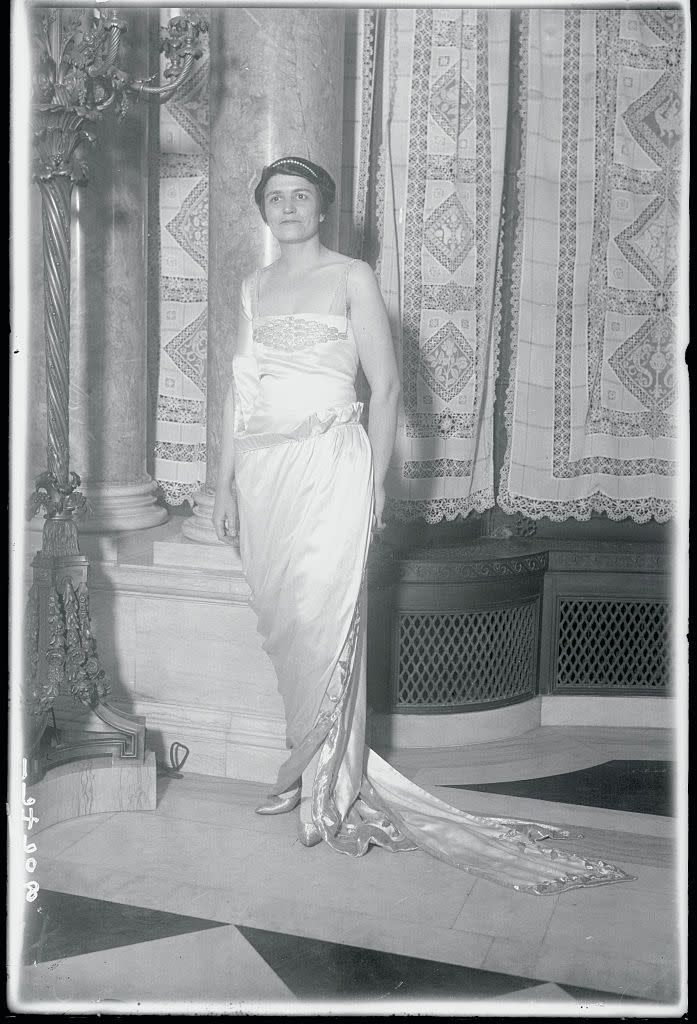
“Lady Duff Gordon presented her ‘Gowns of Emotion’ and we saw, probably for the first time, models appearing on a stage with scenery, lighting and music, while their entrances were choreographed with poses. This theatrical innovation, complete with a printed programme, not only introduced the first fashion show as a performance, but it also introduced the idea of showing fashion to a larger assembled audience, albeit an audience of the same social class and tastes, who attended by invitation.”
This show format also introduced many of the other elements that we today associate with a catwalk show, including the idea of a front row.
“This introduction of the stage was also significant because it established the divide between the audience and the models, as well as the spatial distribution of the audience itself, who occupied which seats and where.”
However, the traditional catwalk – in the sense of the often raised runway projecting from the stage – came from the fashion presentations that took place in department stores in the early 20th century, where they had large spaces available. These presentations for middle-class shoppers, Costantino argues, were vital in “validating and then disseminating the fashionable styles set by designers”. And, it was here that the more modern raised catwalk gained prominence and popularity.
It wasn’t until the 1960s that we started to break away from these fixed and rigid spaces of department stores and salons, where designers started to be more inventive with location and setting, something which is commonplace today.
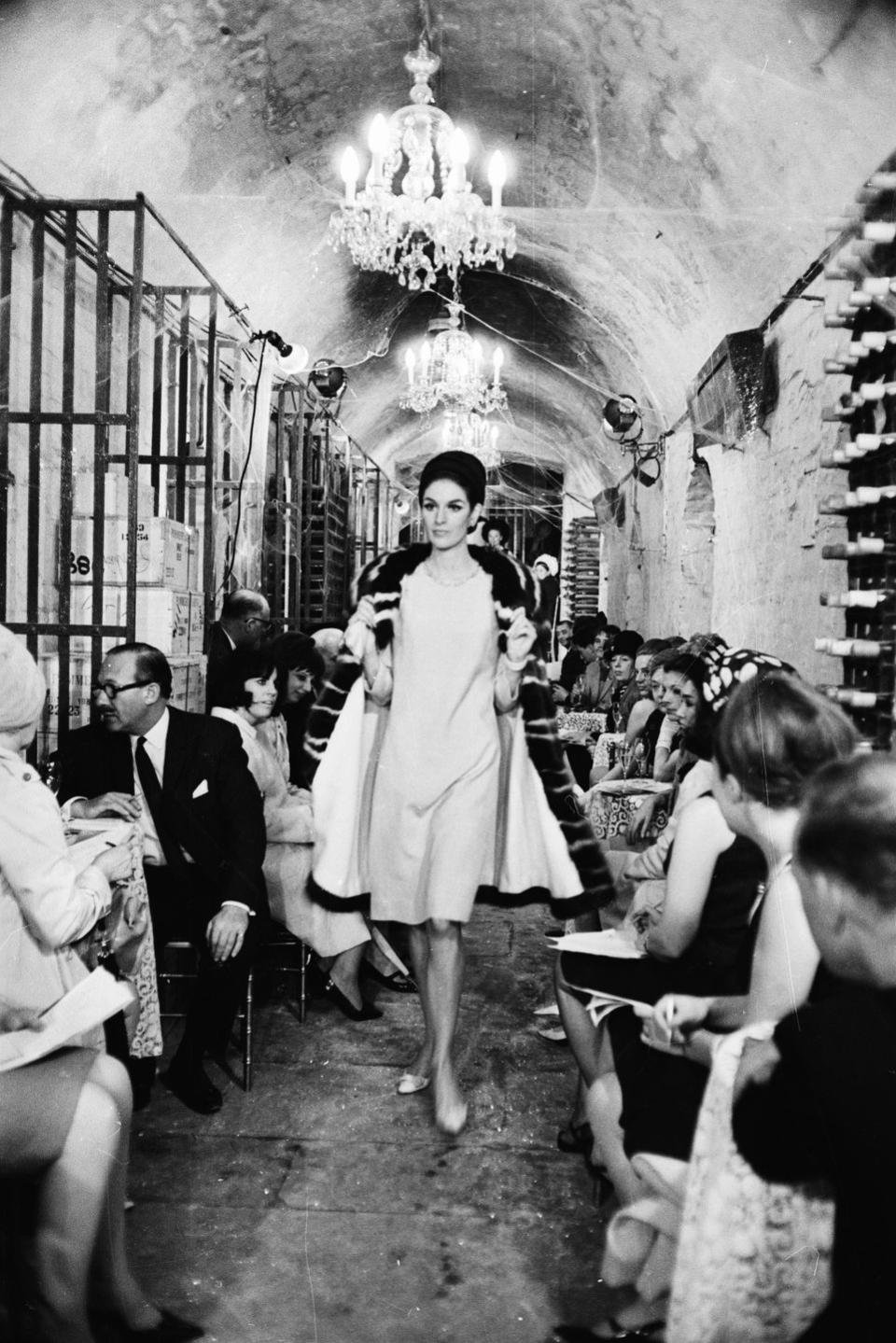
“Balmain presented a 1965 collection in a wine cellar, while Pierre Cardin held a show outdoors next to the Seine in Paris and Paco Rabanne showed at the Crazy Horse Saloon,” recalls Constantino. “It now meant that fashion shows had to adapt to the space in which it was being presented. Each new seasonal presentation meant that the fashion show had to be reimagined, and the scene – the setting, the music, the lights and the choreography – had to be redesigned along with the collection.”
From here, the fashion show just got bigger, particularly once we headed into the nineties.
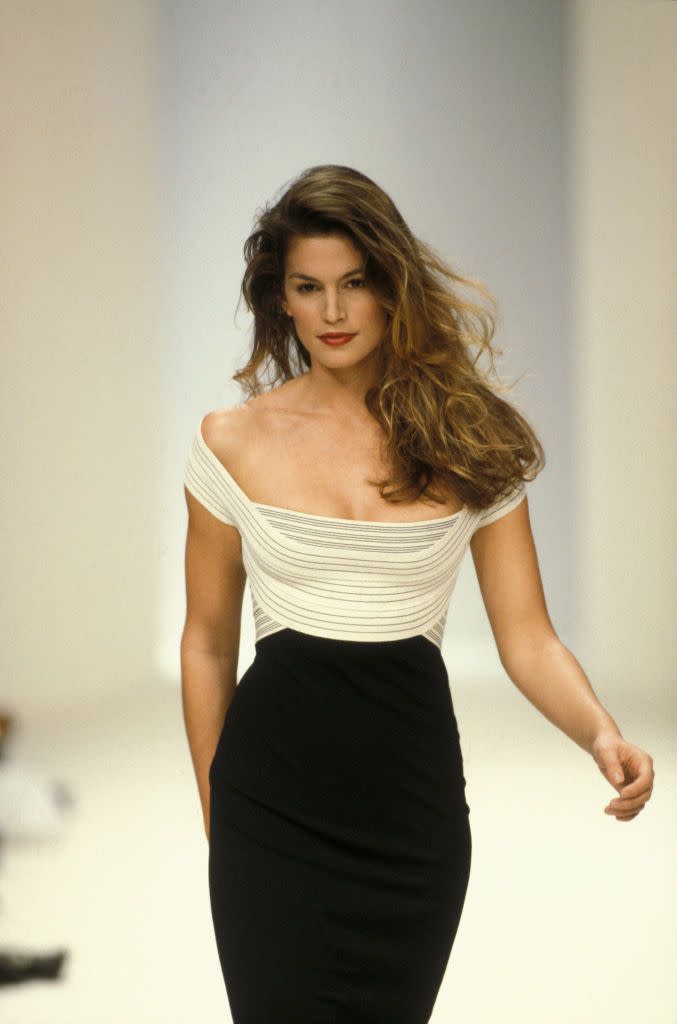
“The supermodel – and the super shows – in the 1990s that cost millions to stage are indicative of the economic investment and the market value of the major fashion brands and of consumer culture and spending in this period,” Costantino explains, adding that the enormous amounts of money spent led to fashion shows becoming a “visual spectacle”, but didn’t really add or change anything to the basic concept of what a fashion show was.
At this point, pre-social media, fashion houses were still in complete control of the imagery and video footage that was released, making the shows more elitist and exclusive than they are now.
“Fashion was what the fashion house and the fashion media said fashion was,” she says. “It was in their interests to maintain this symbiotic power relationship with fashion brands as media advertisers.”
In fact, although there had been instances of fashion houses allowing the public in – Thierry Mugler’s 1984 show was the first of its kind to let people buy tickets – the catwalk show was largely inaccessible to the public, with the shows happening behind closed doors for fashion editors, buyers, celebrities and private clients. When social media arrived of course, this all changed.
“The purpose of fashion shows has not changed at all,” Steven Kolb, CEO of the Council of Fashion Designers of America, tells me. “It has always been about creating visibility and exposure for a designer’s collection with the ultimate intention of selling clothes. As the world became more connected, the fashion show evolved from smaller, local events to larger international experiences. The onslaught of technology put fashion weeks within reach of people who otherwise had no access to the shows. With that, fashion became a pop-culture phenomenon and a source of entertainment.”
As a result, the digital boom of fashion week suddenly exploded, as those on the front row shared their fashion-week experiences with the rest of the world. Street style followed as the fashion influencer was born – and the whole circus which we have come to recognise as fashion month was fully formed.
“Over the past 10 years, social media played an increasingly important role in fashion weeks, giving more people more access to events and experiences that were once aimed only at a select group of industry insiders, celebrities and high-net worth individuals,” Caroline Rush, chief executive of the British Fashion Council explains.
All this led to the even further democratisation of fashion week; brands chose to livestream their shows to all, while London Fashion Week opened its physical doors to the public with consumer-facing shows, for which tickets could be purchased.
“Fashion designers have a role in not only showcasing design but also reflecting society and moments in time,” Rush says. “As chief executive of the BFC for the past 11 years, I have witnessed immense change in the presentation of fashion shows first hand.”
These changes have only been exaggerated over the past two years as coronavirus swept across globe, resulting in designers being forced to embrace a digital format while travel and gatherings continue to be heavily restricted. A few seasons into this new world though, and it’s still not clear how things will pan out.
“The intense interest in fashion layered more and more shows and activations onto the global calendar and pushed brands to invest resources in order to stand out from the crowd,” Kolb says. “The pandemic has been a reset. It’s a time when designers are beginning to scale back and take stock of the impact of a show.”
Many designers embraced the creative challenge this presented, showcasing their collections via fashion films or shoots and finding inventive new ways to pull audiences in. In some ways, it gave the industry an opportunity to see what could be done without a traditional catwalk show. However, statistics from the Paris Fashion Week spring/summer 2021 show season suggested that brands who still held some form of 'traditional' catwalk fared best.
"While social media interest in Paris Fashion Week significantly decreased this year compared to last, the designers who did have the most success on social media were those who scaled back their presentation the least," Tracy David, chief marketing officer at data and analytics firm Listen First told WWD. "With the pandemic with us for the foreseeable future, designers that are able to find safe and creative ways to return spectacle to the runway will generate the most social media interest around upcoming fashion events."
This suggests that we are not quite there yet in forming a replacement for the time-honoured catwalk format. For many, clearly, digital doesn’t quite cut it.
“Fashion shows will never go away,” Kolb argues, while Rush admits that “digital will never replace the magic of in-person gatherings and events”.
And of course, this pandemic won’t last forever, but that is not to be said that the industry should revert back to how things were. The role of fashion week was already being called into question.
“The pandemic has incited a reset of the industry that was long overdue and this must be seen as an opportunity to set us up for the future,” Rush says. “It has allowed us time to reflect and deepen the conversation around sustainability and the role the fashion industry has to play when it comes to issues such as global warming and the use of natural resources. This is an important conversation that we will continue to have beyond the period.”
“It’s time for change,” Costantino adds. “The concept of fashion itself emerged at a time when economic and social changes encouraged us to discard clothes before they were worn out, to think of clothes as visible signifiers of economic status and through which we constructed our gender, race, ethnic and other identities along mainstream, normative ideologies established in a white, Western, patriarchal society. While such discourses are increasingly questioned and challenged in society, fashion continues to maintain its presentations along these old lines.”
Costantino suggests that the catwalk show “as an audio-visual spectacular” may have “reached its zenith” and that the focus may move from the architecture of a show back to the importance of design. But, we can’t rely on fashion houses and brands to make this change: “It is not in their interests to do so.”
“The mode of fashion presentations will change because of pressures largely from outside the industry – from digital technologies; from issues arising because of questions centred around ethical production, consumption and sustainability; from the experiences of Covid, lockdowns and social distancing, and, most importantly, from new designers and creatives who actively engage in exploring the nature of their practice and examining fashion as part of our material culture.”
This future could well be in the development and embrace of technologies that many brands have only just started to touch on or in others that have not really been seen yet, she argues. What seems fundamental though is that change is coming and designers will need to be receptive to how society is moving forward and how attitudes are changing if they want to survive. What comes next will be fascinating to watch – whether we're doing so from the front row or the sofa.
You Might Also Like

